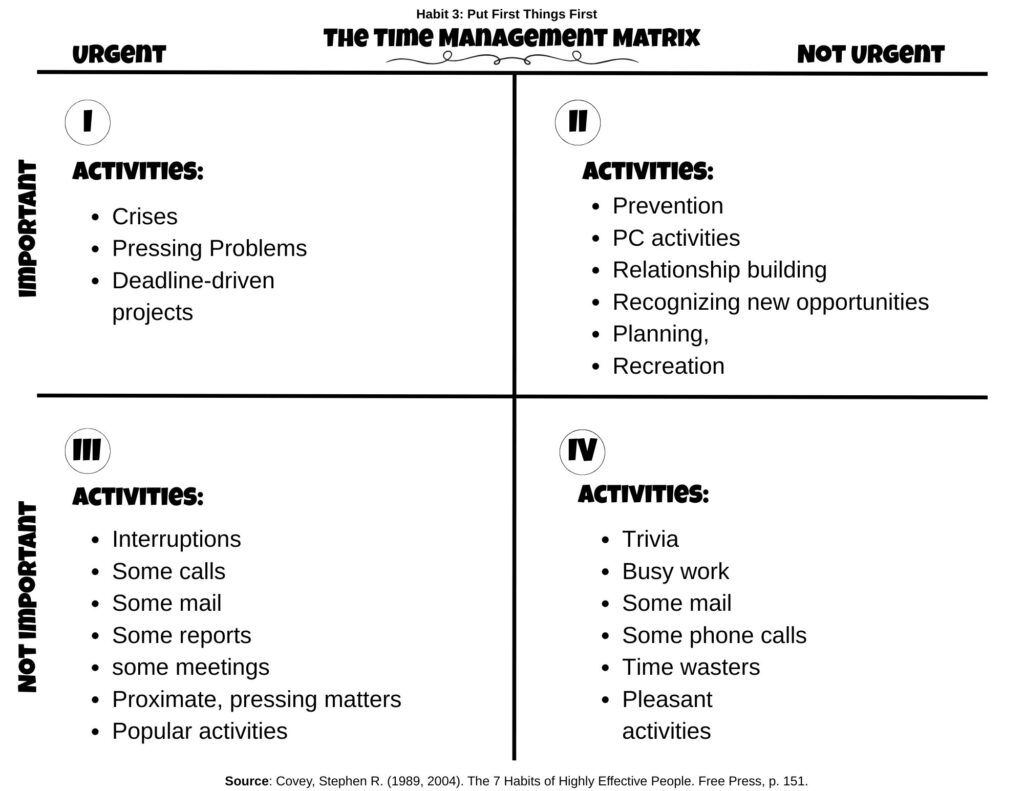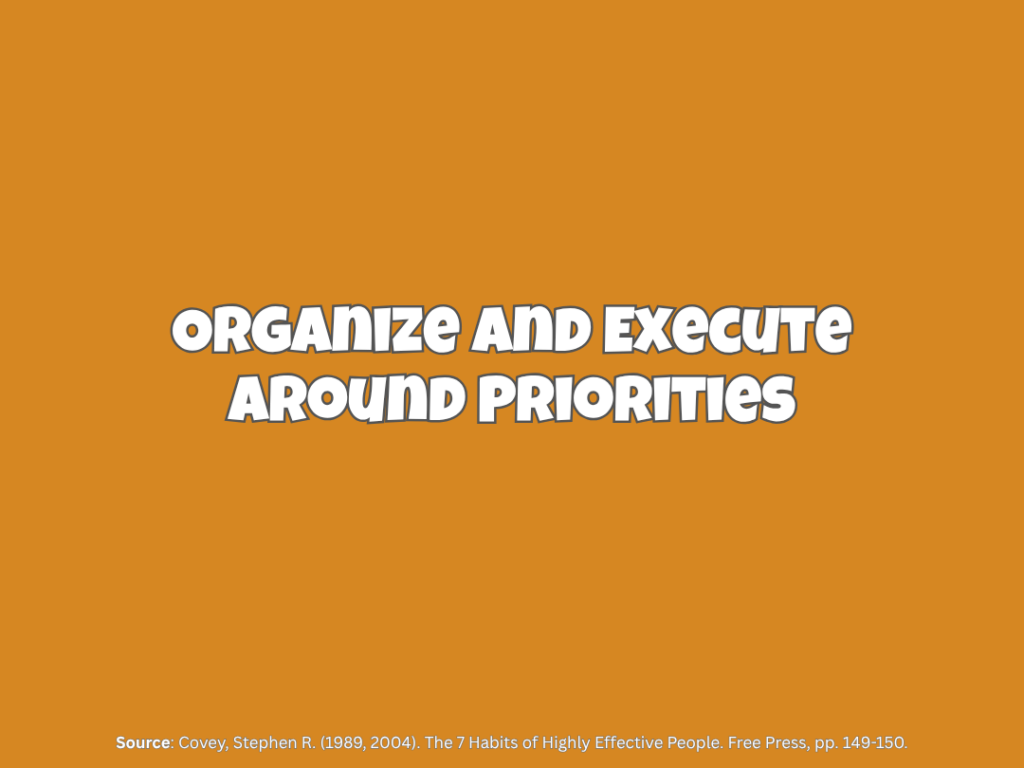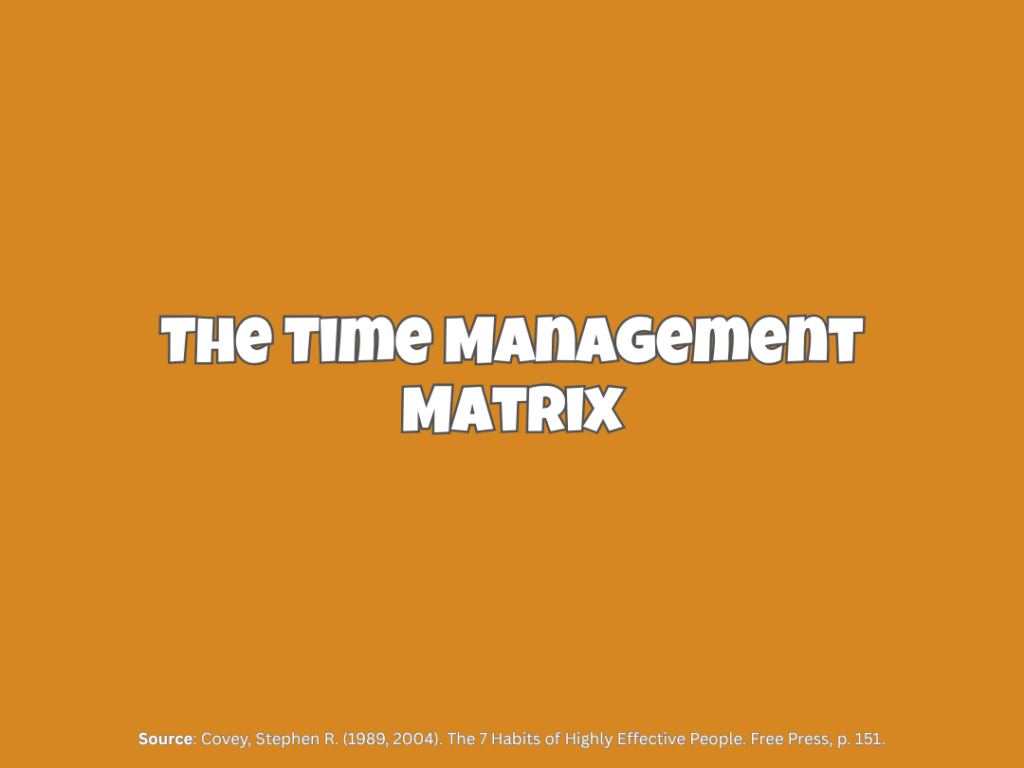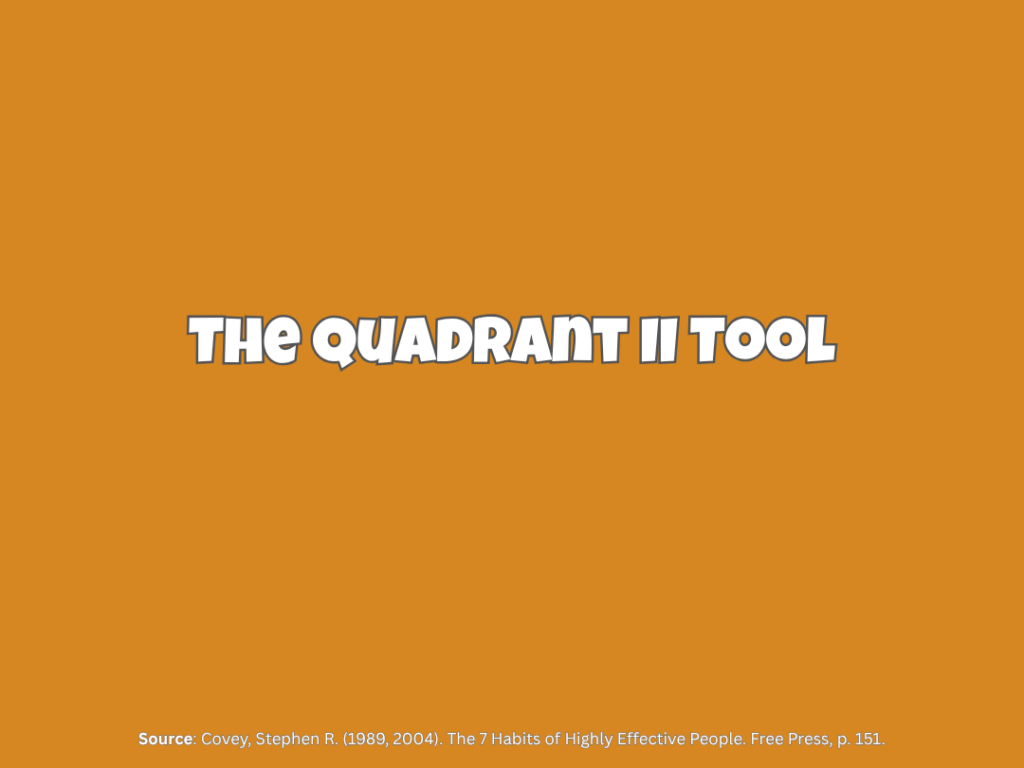Habit 3, then, is the second creation, the physical creation. It’s the fulfillment, the actualization, the natural emergence of Habits 1 and 2. It’s the exercise of independent will toward becoming principle-centered. It’s the day -in, day-out, moment-by-moment doing it.
But with that foundation, you can become principle-centered, day-in and day-out, moment-by-moment, by living Habit 3–by practicing effective self-management.
Effective management is putting first things first. While leadership decides what “first things” are, it is management that puts them first, day-by-day, moment-by-moment. Management is discipline, carrying it out
Discipline derives from disciple – disciple to a philosophy, disciple to a set of principles, disciple to a set of values, disciple to an overriding purpose, to a subordinate goal or a person who represents that goal.
Source: Covey, Stephen R. (1989, 2004). The 7 Habits of Highly Effective People. Free Press, pp. 147, 148.
Organize and Execute Around Priorities
In the area of time management, each generation builds on the one before it – each one moves us toward greater control of our lives. The first wave or generation could be characterized by notes and checklists, an effort to give some semblance of recognition and inclusiveness to the many demands placed on our time and energy.
The second generation could be characterized by calendars and appointment books. This wave reflects an attempt to look ahead, to schedule events and activities in the future.
The third generation reflects the current time management field. It adds to those preceding generations the important idea of prioritization, of clarifying values, and of comparing the relative worth of activities based on their relationship to those values. In addition, it focuses on setting goals – specific long-, intermediate-, and short-term targets toward which time and energy would be directed in harmony with values. It also includes the concept of daily planning, of making a specific plan to accomplish those goals and activities determined to be of greatest worth.
But there is an emerging fourth generation that is different in kind. It recognizes that “time management” is really a misnomer— the challenge is not to manage time, but to manage ourselves. Satisfaction is a function of expectation as well as realization. And expectation (and satisfaction) lie in our Circle of Influence.
Rather than focusing on things and time, fourth generation expectations focus on preserving and enhancing relationships and on accomplishing results – in short, on maintaining the P/PC Balance.
Source: Covey, Stephen R. (1989, 2004). The 7 Habits of Highly Effective People. Free Press, pp. 149-150.
Habit 3, putting first things first, involves utilizing The Time Management Matrix that organizes tasks and events by their level of importance and urgency. “Importance has to do with results. If something is important, it contributes to your mission, your values, your high priority goals.” (151) “Urgent means it requires immediate attention.” (150) Effective personal management is living in Quadrant II, the important, non-urgent things.

Referring to The Time Management Matrix, there are four categories:
- Urgent / Important
- Not Urgent / Important
- Not Important / Urgent
- Not Important / Not Urgent
The first category are the emergencies. The third and fourth categories are not important, both urgent and not urgent. For best personal management, we want to spend our time in the second category, the not urgent and important items. We can do this by utilizing The Quadrant II Tool. We plan each week, determining our goals within our different roles and plot each goal on the week’s calendar, hour-by-hour.






